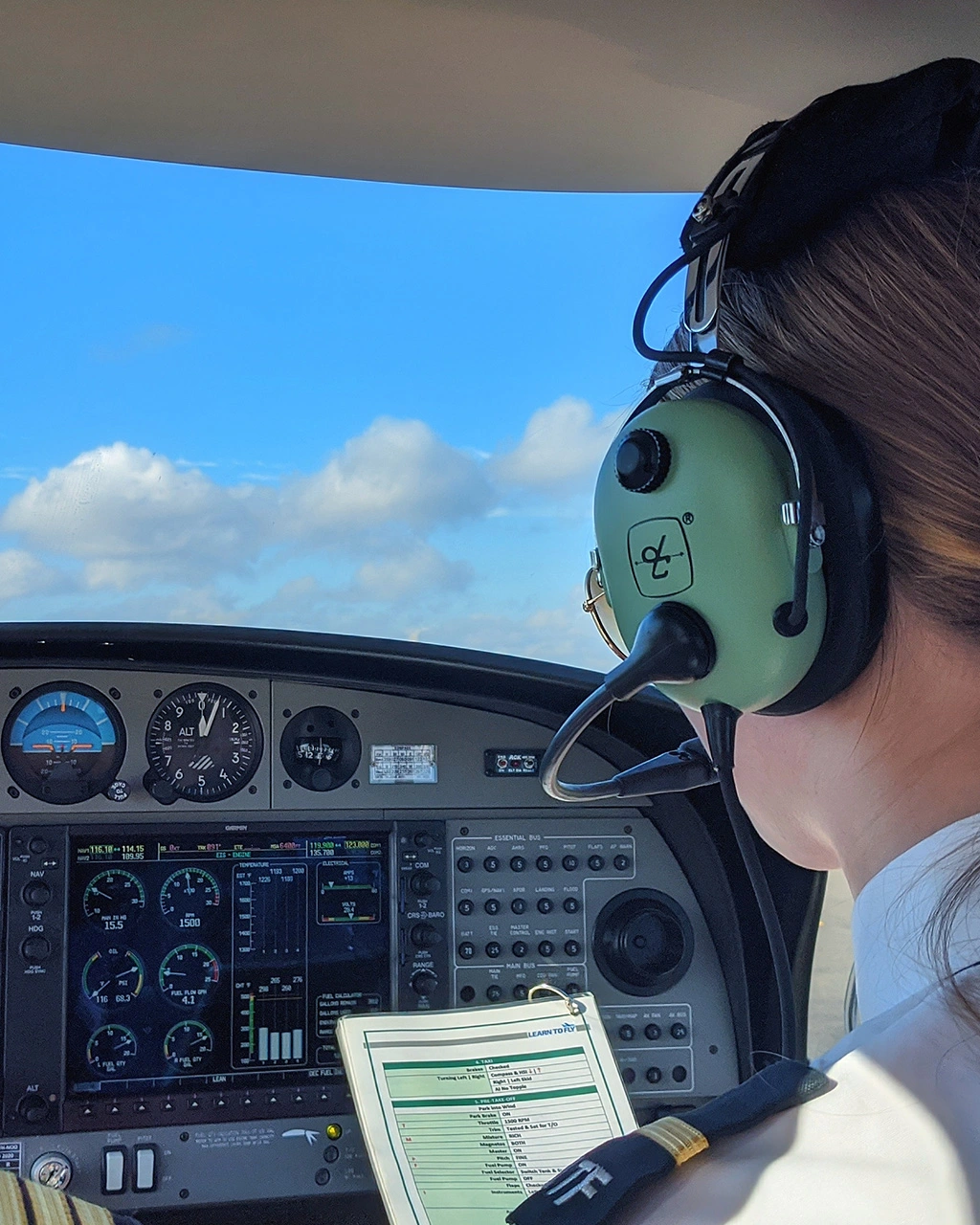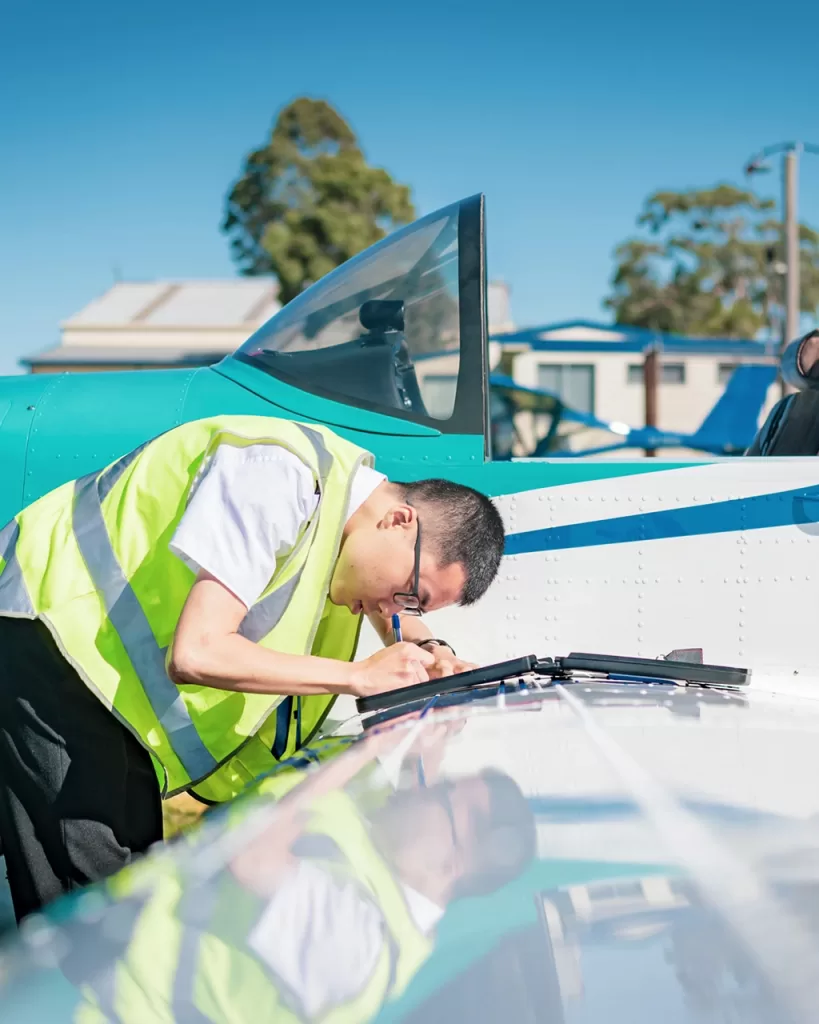
August 31, 2017
Pilot and Aircraft Safety at Learn To Fly
At Learn to Fly, pilot and aircraft safety is and always will be our number one priority. It is the cornerstone of our operation, and we strive to maintain a positive and transparent safety culture. We continue to uphold an impeccable safety record as conveyed on the Recreational Aviation Australia (RAAus) Accident and Defect Summaries.
The safety culture at Learn to Fly acknowledges that flying and flight training involves risk. It’s vital that students and instructors alike are educated about these risks and the processes involved in risk minimisation.
See how we carry out pilot and aircraft safety in our flight training operations at Learn To Fly.
Aircraft Maintenance
Each aircraft requires maintenance checks for every 50 and 100 hours of flying. All scheduled maintenance is planned in advance. We will never undertake any flights or flight training on planes requiring maintenance.
Pilots and engineers can write up a defect on the aircraft’s Maintenance Release (MR) at any time. For serious defects, the aircraft will immediately become unserviceable and simply will not go flying until maintenance is completed.
The Maintenance Release is required to be signed by a pilot (instructor or pilot certificate holder) before the first flight of each day to ensure that the aircraft has passed the daily inspection requirements and is suitable to fly.
Instructor Qualifications
Pilot and aircraft safety for us also means company standards require that instructors at Learn to Fly be well-trained. We will only employ instructors who we are confident, focused, alert and ready to respond immediately to any potential situation where the risk outweighs the learning opportunity.
Based on the current guidelines, all of our flight instructors are at an RAAus senior instructor level. This rating can only be achieved if the pilot accumulates certain flight training experiences and passes a flight test that is conducted by external RAAus certified flight testing officers.
Some of our students may become junior instructors when they graduate. However, it is a compulsory requirement that they are supervised by senior instructors when they work at the school.
In addition to this, our chief flying instructor (CFI) actively supervises all flight training operations and consistently checks training records and documentation. This ensures that Standard Operating Procedures (SOPs) are complied with for both instructors and students. SOPs compliance is checked at various times. This is usually by attending flights with students to confirm SOPs are maintained, and ensuring all instructors have current qualifications.
Flight Training
We ensure a safe learning environment every time. A student will not fly if the weather is not suitable for that particular lesson. For solo flights, these standards will be even stricter and reflect considerations such as turbulence, wind speed, daylight, student’s abilities etc so that we can provide
Before all flights, the aircraft will be thoroughly inspected. This ensures all controls are functional, check for obvious damage to the engine, airframe or structure before any flight is to take place. After engine start and prior to takeoff further checks are carried out as per the SOPs. This is recommended by both the aircraft manufacturer and in the aircraft’s Pilot’s Operating Handbook (POH) to further assure a safe and efficient flight takes place.
Each student’s flights are recorded in detail. Instructors will rate their performance to make sure students reach the standard or competency of that particular lesson. Students who do not meet these standards or competencies will have to redo the lesson sequence until this standard is met. Within the school, we have systems in place to cross-check and ensure that all training records are completed and updated in a timely manner.
Briefings are always done properly and consistently before and after each flight. This ensures that students are both aware of what they are going to do, and of the specific standard that is required for that particular lesson.
Prior to solo flights, instructors will double-check to make sure the students have all the required documents such as a medical certificate, student pilot licence etc. Training records must also show they have achieved all the necessary competencies prior to undertaking any solo operations.
Creating a Pilot and Aircraft Safety Culture
Further to the priorities and procedures outlined, we maintain our own Risk Management Plan and Safety Management System. This enables us to further minimise the potential risks associated with flight training. Despite this comprehensive system, we must not think that we are infallible. We encourage all of our staff and students to form a habit of looking, learning, and discussing potential risks we see as part of our normal day to day operation. This attitude allows us to evolve and update our systems regularly. That then helps to ensure a safe operating culture persists within the Learn To Fly organisation and group.
We encourage instructors and students to go through appropriate channels to advise safety concerns within or outside of our operation.
We believe that technology as a communication tool has great potential to assist safety operations. Flight training software can provide updates on aircraft unserviceability or if an aircraft may need to be grounded; through to communicating safety concerns or topics that instructors or students raise within the organisation.
Exceeding Expectations
We aim to have higher safety standards than other flight schools in Australia.
On top of the Public Liability Insurance and the RAAus Member Liability Insurance, we cover an additional A$5 million in Liability Insurance for all of our students.
We only buy brand new RA-Aus aircraft so we can be certain of the maintenance history for every plane.
All RA aircraft in our fleet is equipped with Rotax engines which have an outstanding reputation and operational safety history.
At Learn to Fly, we believe all these extra steps – combined with the safety culture exhibited by our individual pilots, instructors, and the student group – will allow us to go a long way in providing an extra margin of safety.

Want to fly with us? Email [email protected]. You can also visit https://drift.me/learntofly/meeting to book a meeting and school tour.









